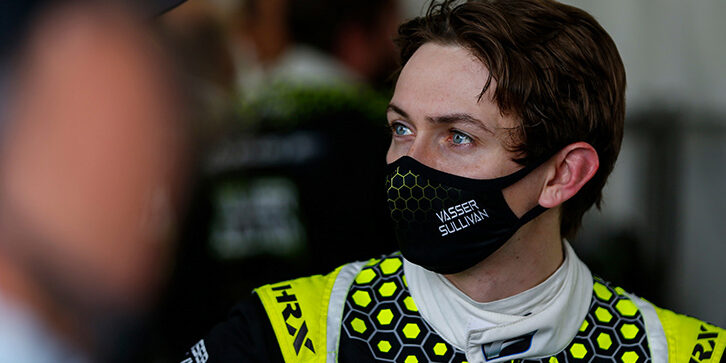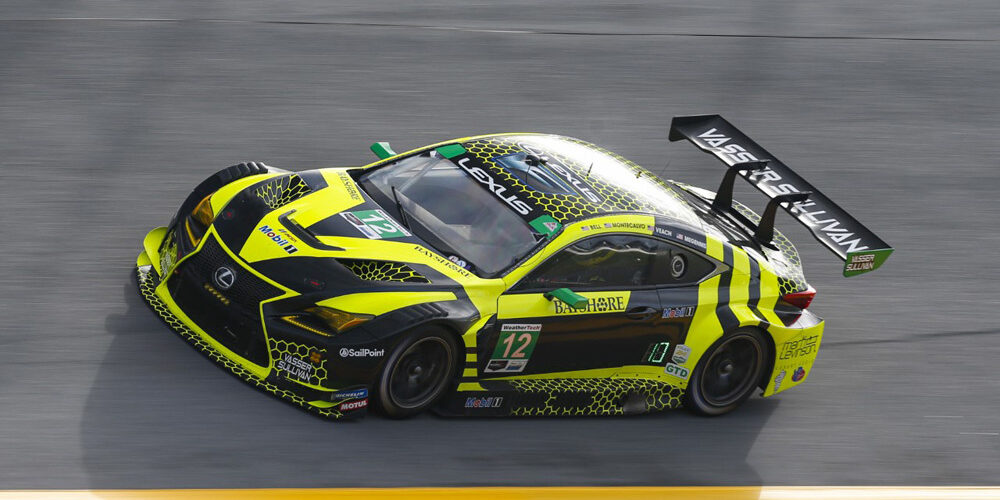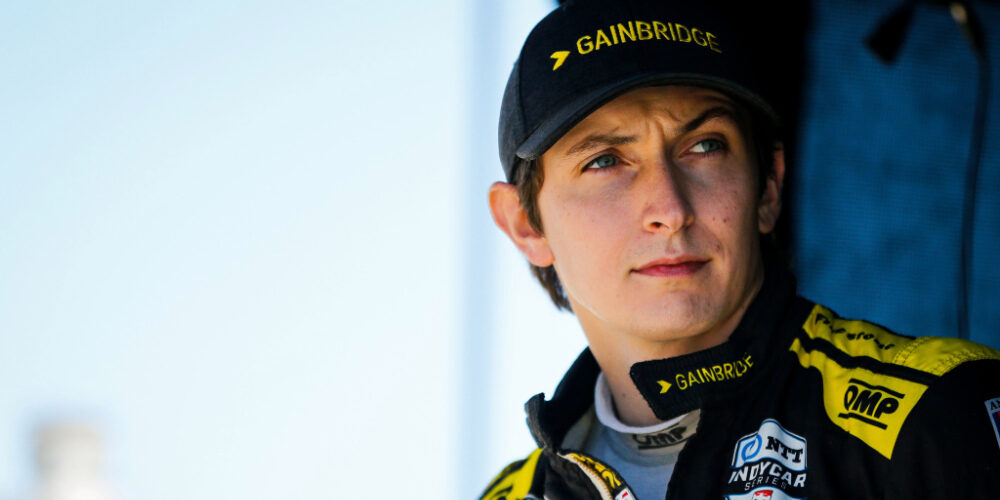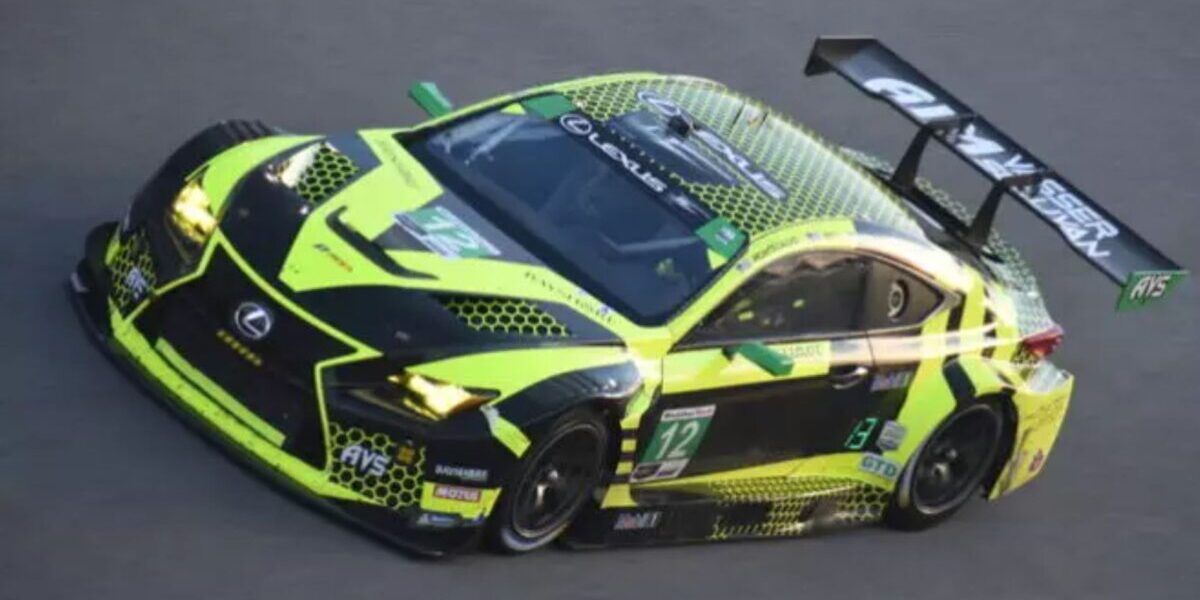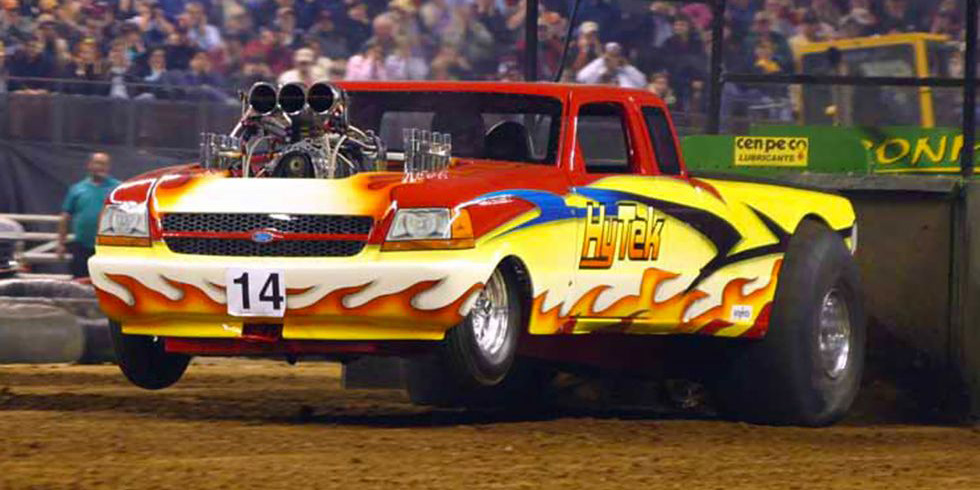
How Tractor Pulls Created a Future Racing Star
Marshall Pruett | Road and Track
Swirling plumes of dirt and diesel fumes made more sense to Roger Veach. It’s where the Ohioan, an I.T. specialist by day, rallied his family around the sport he loved.
Outside their home in Stockdale, and its accompanying workshop, his sons Brandon, the oldest, and Zach, the youngest and smallest, drew their earliest breaths while standing on rectangular strips cut into farmlands and fairgrounds. It was there where pint-size Zach watched in awe as Roger became a champion tractor puller.
He mastered the giant vehicles, connected to massive sleds with 50,000 pounds or more of moving weights, locked in territorial drag races with the earth. One driver, sitting on top of ridiculous power, transmitted to the dirt through custom off-road tires until the weight of the sled brings a rapid end to the forward momentum. In this war against physics, the longest pull wins, and Roger became one of the best in his era.
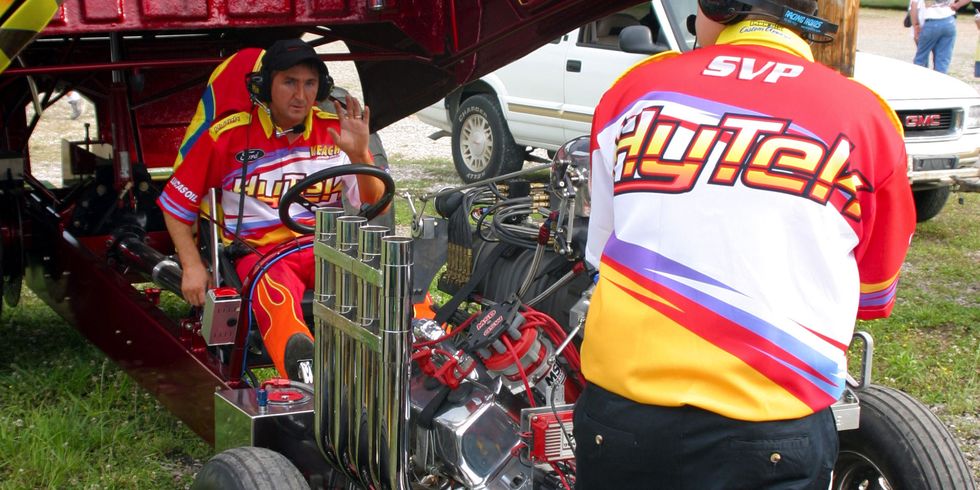
Marco Andretti carries the championship-winning DNA of his father Michael and grandfather Mario into every IndyCar event. Graham Rahal, son of 1986 Indy 500 winner and triple IndyCar champion Bobby, bears the same generational pedigree. Famous American sons, seemingly destined for greatness as a result of their anointed open-wheel blood.
They’re joined this year by Zach Veach, now 23, as the newest and most unlikely member of the championship-pedigree club.
From Mario to Michael to Marco, and from Bobby to Graham, those lineal IndyCar trajectories make sense. Then there’s the Veach boy, who wandered off the farm, left tractor pulling to others, and found his home at the Indianapolis Motor Speedway. Veach’s strange how-I-got-to-IndyCar story doesn’t fit among those authored by the Andrettis and Rahals, which probably explains why it’s so remarkable.
“For me, something that was very similar [to open-wheel racing] was the community aspect of [pulling],” says Zach who, coincidentally, will spend the next three years as Marco Andretti’s teammate in the Andretti Autosport IndyCar squad. “I am talking about a community of kids; a lot of kids were brought through all the pulls by their fathers, so for me when I showed up, that was my little community, a lot of kids my same age, so that was fun.”
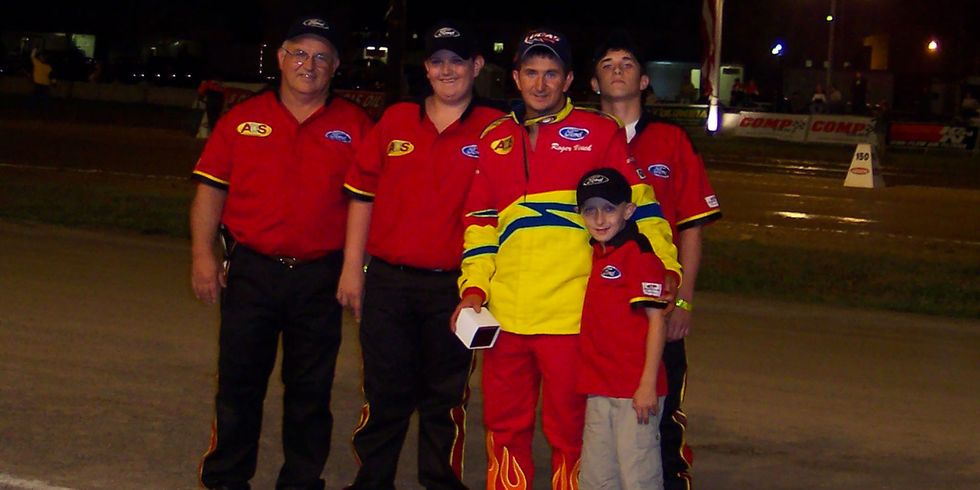
Roger’s youngest was especially tiny during his tractor pulling days. Thankfully, Zach wasn’t averse to doing the dirty work, which has served him well in the pursuit of an IndyCar career.
“I have a brother that’s about five years older than me, so he was the one that helped Dad mainly with the [mechanical] work,” he continues. “He would help my father rebuild the engines more so. I was always given the rag and wax or the Swiffer duster. Early on it was my job to clean all of the dirt out of the wheels in the back of the truck. Anything that wasn’t shiny.”
“We have some pictures where he was so tiny,” Roger adds, “and he was actually taking Mothers to the aluminum wheels, him standing there and he made it to about half the height of the wheel. He’s up inside there polishing away…”
It’s worth taking a detour into Roger’s life and career before searching for more answers on how Zach landed a sponsor, worth a reported $20 million, to drive an Indy car for Michael Andretti.
In a scenario that’s not too far removed from the Andretti family dynamic, Zach’s grandfather took part in the early days of tractor pulling, as did his grandmother, and from there, the hook was set with his father. Roger’s forays into the sport came during high school; faced with a choice to dedicate his life to racing or head off to college, the practical option held sway. His education would pay off as proceeds from the tech firm he founded, ADS IT Solutions, went towards a return to pulling on the weekends.
With his wife and young family in tow from the early 1990s through the late 2000s, Stockdale’s finest passed down his love of racing to the boys. Although Zach could barely reach the pedals, driving their Gator utility vehicle around the property—up and back to grab boxes of parts for Roger’s pulling trucks, or to tow a variety of equipment around—gave him an early sensation of how it felt to control a machine with his hands and feet.
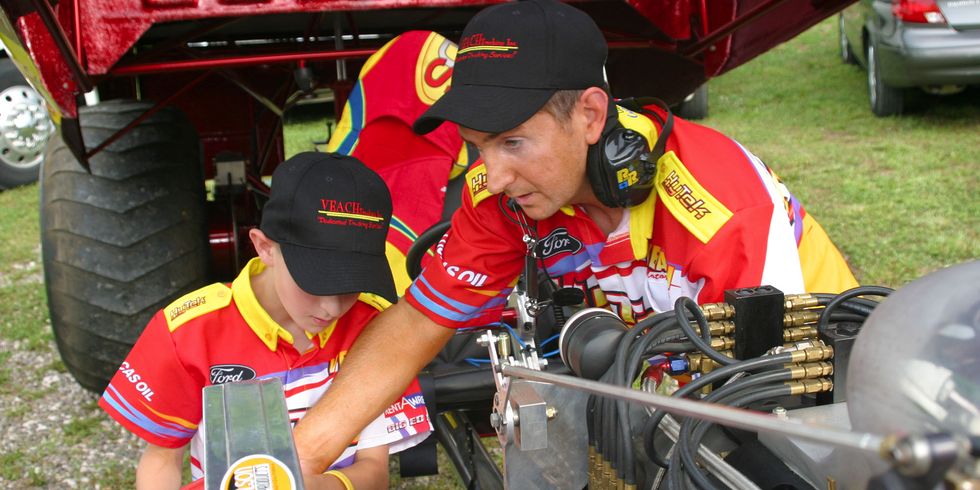
It wasn’t Roger’s supercharged, Ford-bodied dually, and given his age and modest stature, it’s fair to say Zach wasn’t necessarily being groomed to take over for his father inside the wheelie-popping behemoth. But the boy did want to race, which led to a surprising decision by the pulling champion.
“Motor sports have been so good for me and relationships with my two boys because Brandon, from the time he was nine until 17 he was with me every evening, every weekend, and when Zach came to me, he was wanting to race, and I told him, ‘you have to be 15 to do this,’” he adds. “He said, ‘no, Dad, I want to drive Indy cars, [and] if I don’t get started soon, I will be too old. This was at 11.
“I was in the interleague pull-off that year. We were looking at the interleague pole, got [to] the truck, [and said] ‘guys, this is the last time I’m going to run.’ They laughed. So I made my run. As I was going back to the trailer–I came up with a lot of cool designs when I was building stuff and I had this one guy who always buys a truck when I wanted to sell, Andy Teasley. I was going back to his transporter and I said, ‘Andy, do you want to buy this truck?’ He said ‘yeah.’
“This was Saturday night 10:30 p.m. By Monday morning at 9 a.m., the tractor-trailer transporter, three engines, all kinds of spares, everything was gone. I bought a go kart and I told [Zach], anytime you want to go on the track I will take you. Any time turned into every day. We were literally at the track seven days a week.”
It was the selfless act of a father. After realizing he’d achieved his sporting dreams many times over, Roger retired in order to sell everything he’d built in the shop with the boys. The funds went to fuel Zach’s unfulfilled driving ambitions.
“You always hear the joke that I want to be a better parent than mine was… He set the bar way too high. He jokes that when I have my own kids I will understand but I look at it now, especially being here as an IndyCar driver, I mean, that was your dream,” Zach said as he sat next to Roger at the recent Phoenix IndyCar test.
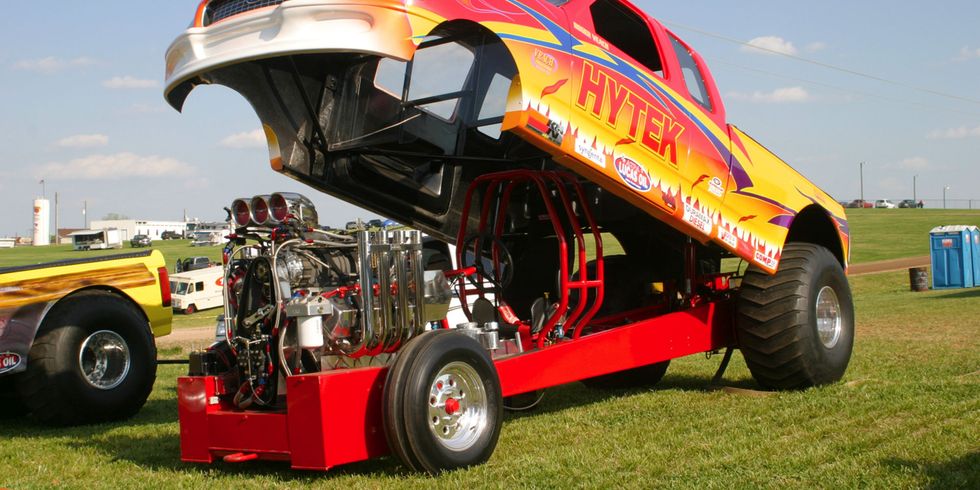
“It would take so much. How much I appreciate it, is so great. But it is funny, I didn’t understand what was going on at first. He’s terrible with surprises.”
Roger’s grand plans to get Zach into a go kart were initially lost on the 11-year-old.
“All of a sudden, the transporter was gone, and we had this empty shop,” Zach continues. “My grandparents owned a trucking company, so we would always haul trash, basically. Our trash from the end of the week or from the race shop, put it in the back of the Gator, take it off the truck and throw it in the dumpster. We were throwing things in the dumpster and I was standing on the back of the Gator like I always do. [Roger] said, ‘hey, there’s going to be a pretty big box coming next week.’ Okay. Why are you telling me this?
“Then he paused, three or four minutes go by and he says, ‘it is a surprise.’ Okay. Another 10 minutes goes by and he goes, ‘it is a go kart.’ Okay. That makes sense. I knew kids were racing from the time they were five or six. So when he said we could go any day you wanted, I felt there was a bit of pressure to make up for lost time.
“Part of it, I just loved driving, you give a kid a go kart and allow them to go faster than he’s gone before, you don’t want to walk away from it. You’re lucky to find a lot of people to help along the way, because the physics of pulling and the physics of competitive karting are slightly different you would think…”
We don’t know how, or even if the aptitude for driving race cars transfers from champions to their sons and daughters.
In the case of Roger and Zach Veach, their chosen disciplines are so wildly opposite, a decent amount of assumption and faith is required to see the link. One involves traveling in a straight line at dozens of miles per hour on dirt, and the other is based on living between 100-230mph on paved road races and ovals, yet both have excelled at their craft.
Getting back to Zach’s willingness to work for what he wanted, a local kart shop owner and a surprise interloper would cement his resolve to become an IndyCar driver.
“We would go there every day,” Roger says. “Steve was the owner and was amazing with us. He would even turn the lights on for us at night so we could stay and run. There was a guy that kept coming up and he was watching us. He would just show up. He wouldn’t say a whole lot and just watch. One day he came up and he said, ‘your son is pretty good.’ I said, ‘I don’t know the difference between caster and camber. The type of motorsports I did, it is nothing like this.’ So he started hanging out and helping us.
“We were out an engine … and I said … ‘I have to send off the engine to get rebuilt.’ And I said, ‘when we get back I will call you. Let me have your number.’ He says, ‘I used to build a lot of those engines. I would be glad to rebuild it for you.’ At first, I thought, who is this guy? Is he going to screw up the motor? Something told me to trust him. Let him do it. So we gave it to him. We just knew his name was Dave. That’s how we knew him, his name was Dave.
“So he calls me the next day, and this was on Sunday afternoon, and he calls me on Monday at 11, and he says, ‘I got the engine done. I would like for you to bring Zach to the shop and I want to put him on my dyno in teach him how to adjust the carburetor.’ That’s pretty good, this guy has a dyno. So, we load up that evening and we get up there, we walk in and there’s all these sprint car pictures, IndyCar pictures.”
“There was a broken front wing hanging on the wall,” Zach recalls. “And you would think I saw the greatest thing in the world that’s a part from an Indy car. I asked him, you must be a pretty good fan of Sarah Fisher because he all these pictures of her. His reply was, ‘well I guess you could say I am her biggest fan, I am her dad.’ That propelled the whole karting [thing].”
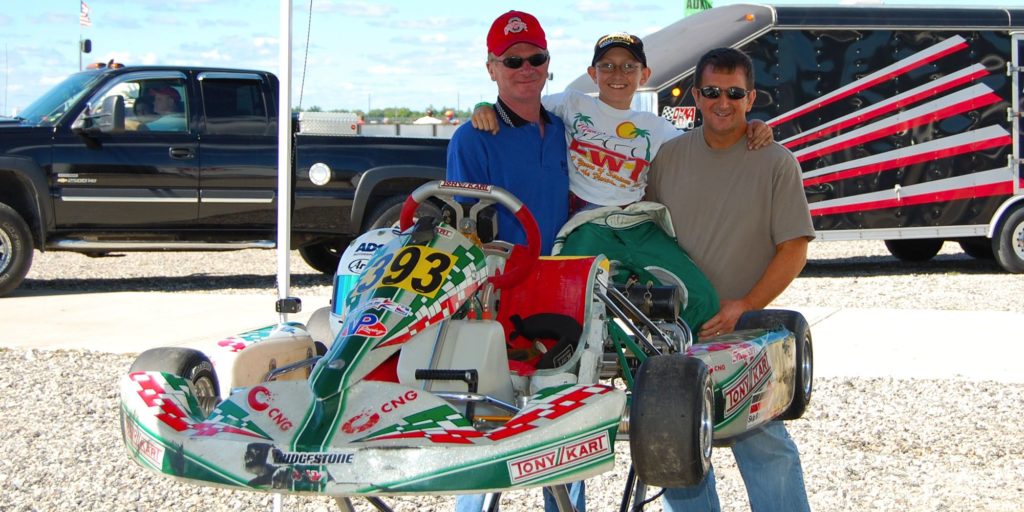
Fisher, a karting and short track oval phenom from Ohio, took the Indy Racing League by storm in 1999. She’d become the first woman to earn a pole position in the series, and throughout a career that lasted 12 seasons, Fisher was among the series’ most popular drivers. For Zach to end up in Dave Fisher’s shop, and have the father of a home state hero teaching him the basics of karting chassis setup, had all the markings of fate at play.
“You look back and there’s always these single moments that change everything,” he says. “Our relationship with Dave, as far as from a knowledge standpoint and a teaching standpoint, that was one of the single most important periods of my history so far.”
By 2010, Veach had progressed to the Mazda Road To Indy, open-wheel’s equivalent of college ball for aspiring IndyCar drivers. The first step in the U.S. F2000 series came with Andretti Autosport where Zach would earn a pair of top five championship finishes before moving on to the middle tier in 2012. The jump, again with the Andretti team, wasn’t as kind. A single season netted 10th in the championship, and for 2013, he moved to the final tier—finishing school—in Indy Lights.
Six wins and a best championship finish of third was produced through 2016, and with a chance to fill in for the injured JR Hildebrand at Ed Carpenter Racing, Veach made his IndyCar debut last year on the Barber Motorsports Park road course in Alabama. Dropped into the proverbial deep end, and still under-sized, he struggled to manhandle the car around the blindingly fast circuit.
Faith would indeed be involved in his second IndyCar encounter. Through a connection made by the pastor of his church, Veach met the CEO of the Group One Thousand One investment firm, and after a quick sponsorship pitch was made, the budget to contest his first Indy 500—with racing legend A.J. Foyt’s team, nonetheless—was secured.
Foyt’s team reached an all-time low in 2017, and Veach wasn’t immune to their lack of competitiveness at the Speedway. Finishing 26th was deeply unrewarding for the rookie, but he received another blessing: despite the poor showing, Group One Thousand One wanted to continue. With one of the biggest sponsor contracts to offer by any driver in recent memory, a return to Andretti Autosport—the back to back winners of the Indy 500 with Alexander Rossi and Takuma Sato—was engineered by Veach.
In an effort to forget the disappointments of 2017, Zach’s bulked up to tame his 750hp Honda-powered Indy car and the 5000 pounds of downforce its wings produce. And even now, after a strenuous offseason muscle-building program that had Roger’s son wolfing down 5000 calories per day at the peak of training, immense effort was required to get him across the 130-pound mark. He started somewhere in the 115 to 118-pound range.
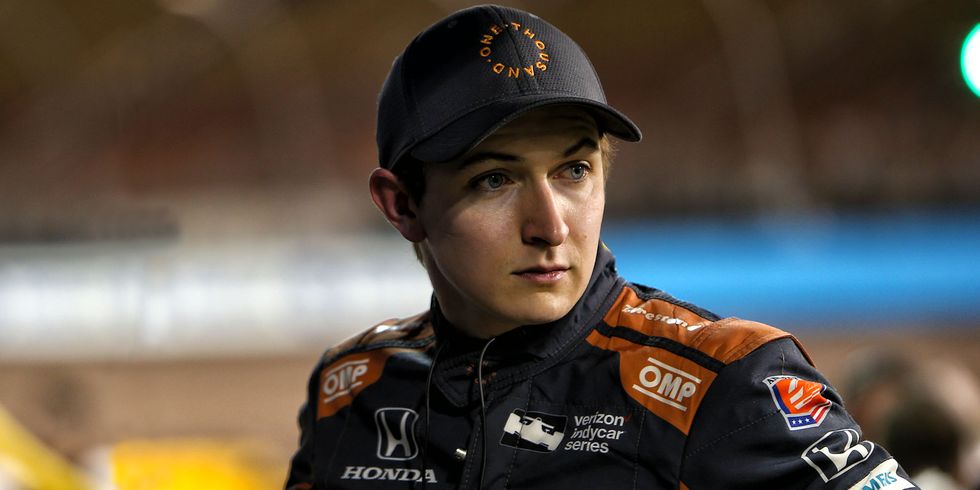
So far, in pre-season testing, Veach has been among the fastest rookies in the field. His rookie IndyCar campaign starts Sunday as part of a 17-race championship that runs through Sonoma Raceway in September. Roger, beaming with pride, is ready for his son’s turn in the sport’s limelight.
“I had my IT firm, and I had a lot of nationally based clients, and so sometimes it was embarrassing because if you mentioned truck or tractor pulling that you did, they would automatically think you were a redneck,” he says.
“So it was funny, I was in California one time meeting with the client and they had 30 stores.
We had just gotten the contract to do all their stores. We went to dinner at Chili’s or something like that. ESPN was broadcasting one of the [pulling] events and it so happened to be one of the events that I won.
“So we were sitting there eating and the guy looked up at the TV screen and he ‘said have you ever seen this?’ ‘Yeah, it is pretty crazy.’ And then they showed my run. He said, ‘that guy really got it out of there.’ The camera switches to me, they are interviewing me. And he looks at that and he looks at me and he looks back … ‘That’s you!’”
Far from rednecks, Zach sees himself as an ambassador for the sport his father conquered—the one that, in a roundabout way, delivered him to IndyCar. Exposing Andretti, Rossi, and team leader Ryan Hunter-Reay to the world of pulling is also on Veach’s to-do list.
“We have to get my three teammates to a county fair, state national, and see this,” he declares. “I feel like a lot of people, if they have never been there and never heard a four- or five-engine [tractor] takeoff, they have no idea. Ear piercing. The horsepower [in IndyCar] will never compare to what we have. It is just incredible.”
And if there was any doubt as to whether Veach will one day cast aside his IndyCar career to become a third-generation tractor puller, the answer was cemented in his youth.
“One last thing I will say is people ask why IndyCar instead of wanting to stick with my dad’s background where I have some of that heritage, per se,” he says. “One trip always sticks out of my mind. We drove 27 hours out West on a single pull, we unloaded, eight seconds of driving for him, he won, 27 hours back home… I’m watching the Indy 500, well, these guys have a whole month of practice and the race is three hours long… I want to do that!”
